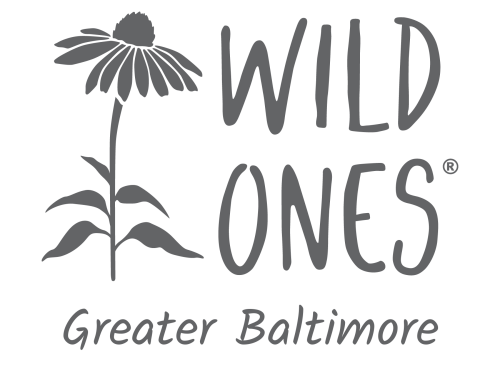by Nan Wray ✎
Wild Ones Greater Baltimore was excited to have the opportunity to host a winter habitat talk by Wildlife and conservation biologist Dr. Shaun McCoshum. So often native gardeners will focus on the nectar-providing services of the flowering trees, shrubs and plants of their gardens; however, so many species can benefit from aspects of the garden that are often removed or overlooked. Leaves, branches, tree stumps, snags, bare dirt, vernal pools, and incidental disturbances provide ample opportunities for creatures as small as an ant or a sweat bee, to amphibians, to birds and raptors, to larger mammals such as fox, opossum, rabbits, groundhogs, and even deer and bear to safely overwinter.
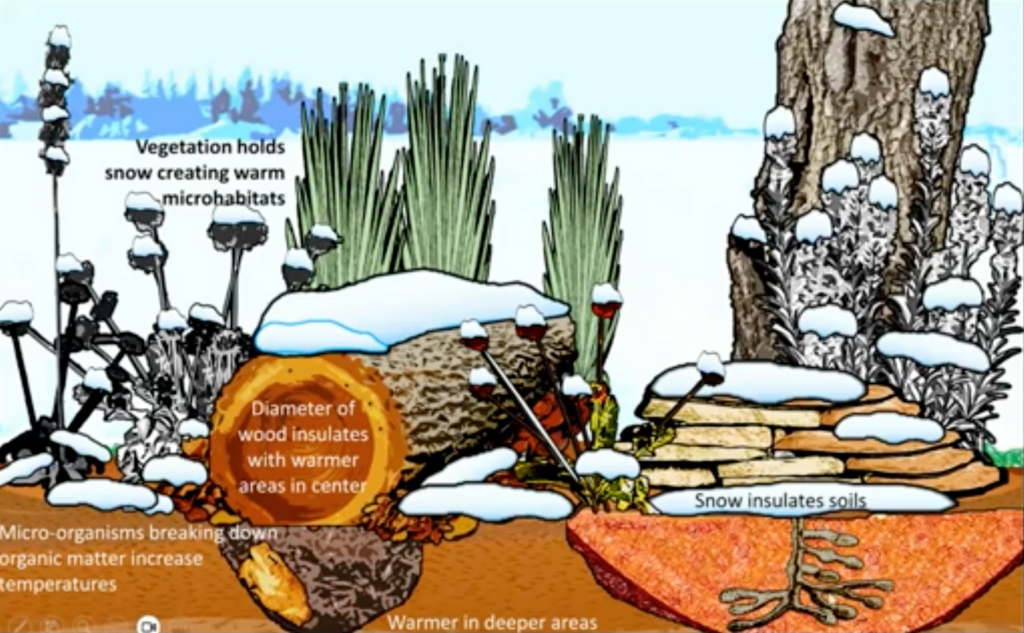
He breaks down habitat into above and below ground habitat, as well as prey and predator habitat. Because of the often transient nature of plant communities (which change over time), having woody habitat can help provide wild species with much needed places to overwinter. This means that home gardeners have an opportunity to help their entire ecosystem thrive by creating a presence for woody materials in their landscape.
“Have different diameters of logs around. Because the log works as an insulator, the outside will get cooler when exposed to cooler temperatures, and the inside will stay a more constant temperature.”
—Sean McCoshum
“Untrimmed plants will hold up snow, creating an insulated layer that at least at a minimum is a windbreak, but also will typically stay warmer from the material underneath, keeping it warm as it breaks down.” McCoshum says the home gardener needs to consider the overwintering strategy of the animals that are present in your yard. “If we do this correctly, you will start to see animal populations become more robust in spring and summer, but if it’s done very well, you should start to see the animals that are active during the winter, and traces that they are around.”

When it comes to moths and butterflies, you also should be aware of that these species’ predators will be present and becoming more abundant, and if you find infected chrysalises, it is important to remove them. Some ways to make the natural enemies less comfortable, you can do things like mow meadow areas once the chrysalises have pupated. In other words, you can improve habitat with different levels of disturbance.
McCoshum discusses creating structure in your garden with plants and rocks, pruning, clear borders, mowed area, paths, rocks, and anything that will create the look of having an “intentional” garden. He suggests then looking at what aspects of the garden that could create habitat that are missing.
Things that are often removed but should be considered are:
- Soil diversity: depth, texture & slope;
- Native plant communities;
- Ecosystem engineers, especially burrowing animals;
- Caves and crevices;
- Large clean temporary water resources (ephemeral pools); and
- Wood, woody materials, and leaf litter.
McCoshum also discusses recommendations for the types of water resources that are most helpful to wildlife, as well as recommendations for log shelters, leaf litter and mulch piles in your landscape design. He recommends filling bird boxes with dry leaves for winter, and encourages the providing of suet for birds. He warns against purchasing standard bee hotels because the holes tend to be too short, which results in an excess of male bees. Instead, he recommends building your own with longer tunnels, allowing room for new female bees as well.
He also suggesting making sure any below ground habitat you create is deep enough, to allow the animal to go at least 6 inches below your the frost line in winter. In Maryland the frost line depth is 30 inches. This means that below thirty inches and below underground water will no longer freeze during extremely cold temperatures, and the animal can stay warmer. He notes that if a hole is near a home or structure the frost line won’t be as deep, because of the warmth the structure conveys.
“Having deep native soils will give burrowing animals enough area to escape the weather as well as enough space for your plants to grow and remain healthy.”
—Sean McCoshum
McCoshum outlines additional techniques for creating habitat under boulders, into caves or vertical soil areas so that the burrow has sturdy walls and ceiling, and loose soil on the bottom for ease in digging in or staying dry.
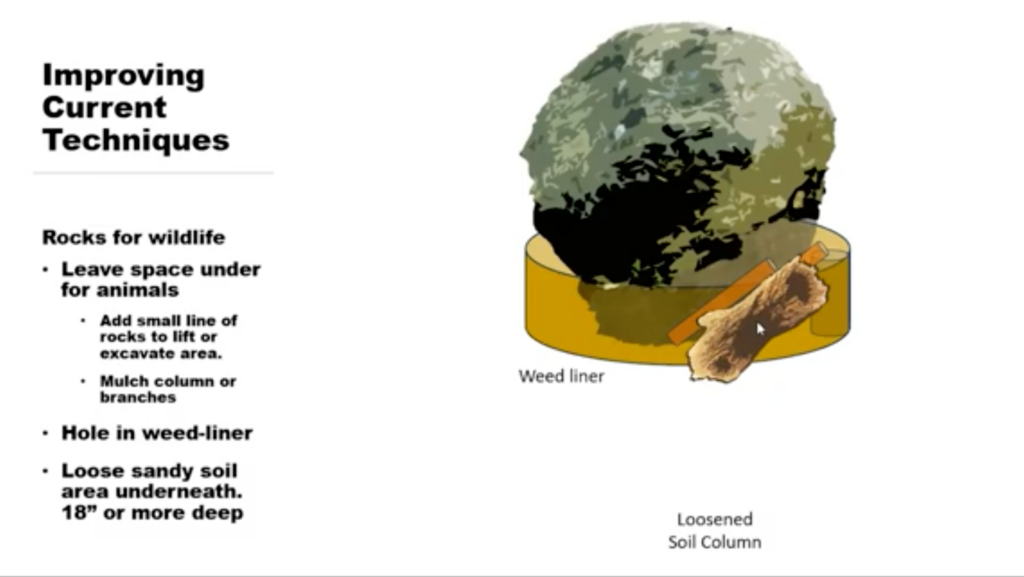
He adds that it is important to make sure whatever you create is not vulnerable to caving in. You may also utilize plastic tubs, the top half of a pet carrier, or drainage tubing.
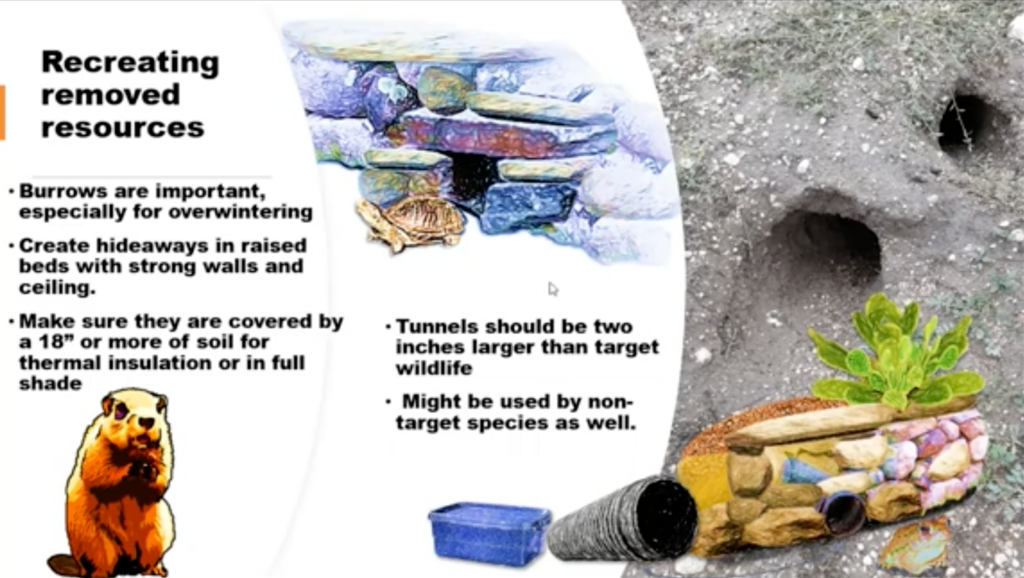
McCoshum also discusses recommendations for the types of water resources that are most helpful to wildlife, as well as recommendations for log shelters, leaf litter and mulch piles in your landscape design. He recommends filling bird boxes with dry leaves for winter, and encourages the providing of suet for birds. He warns against purchasing standard bee hotels because the holes tend to be too short, which results in an excess of male bees. Instead, he recommends building your own with longer tunnels, allowing room for new female bees as well.
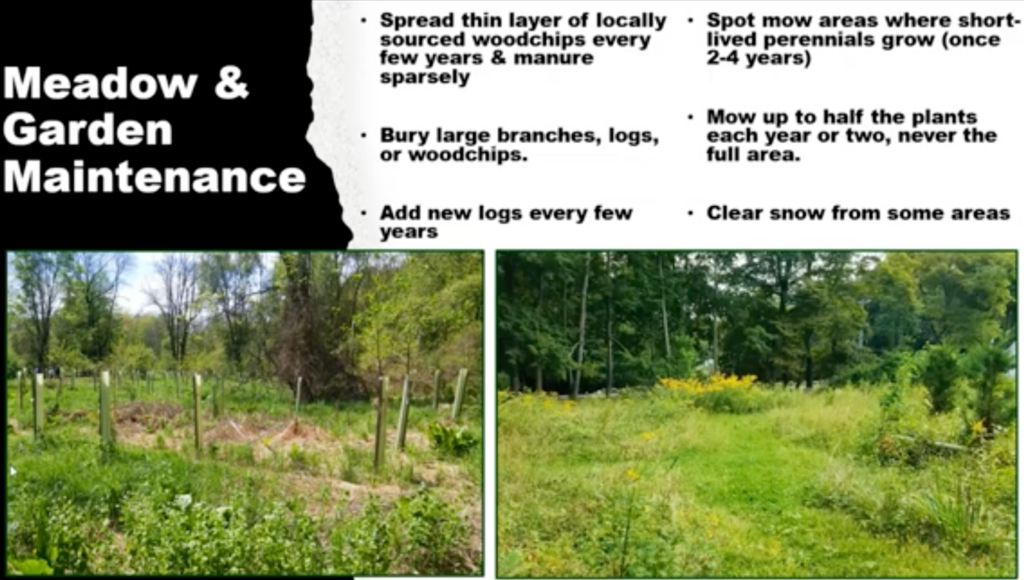
It goes without saying that he recommends a range of native plants to include in your garden to support the habitat that you are creating. Lastly, he gives an overview of some of the impacts of climate change that will mean unexpected sudden cold weather that will cause mortality to plants and wildlife that are not prepared. To shore up your property against such events, you can select plants based on record lows, provide ample shelter for wildlife: deep burrows, mulch piles and den sites, along with extra food and water.
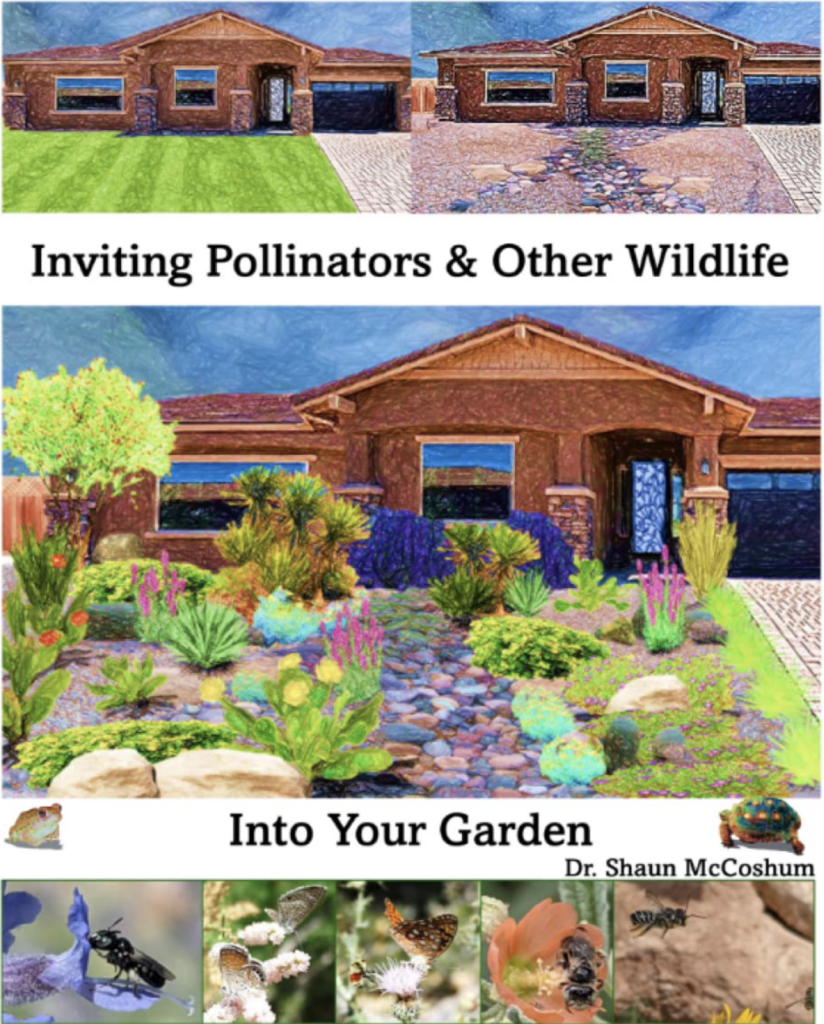
To learn more about creating winter habitat, you may purchase Shaun’s book, Inviting Pollinators and Other Wildlife Into Your Garden. This book helps readers view their gardens as small-scale conservation units and clearly explains how to incorporate areas into the overall landscape.
Profiles on select native bee species are published which cover nesting habits, floral associations, and parasitoids. These profiles follow the plant profiles which also list the bee species and caterpillars associated with the flower species.
He also recommends any of Doug Tallamy’s books to learn more about creating above-ground habitats.
Rounding out recommendations would be Audubon’s Birdhouse Book and Josh VanBrackle’s Attracting Wildlife to Your Backyard. ❀
